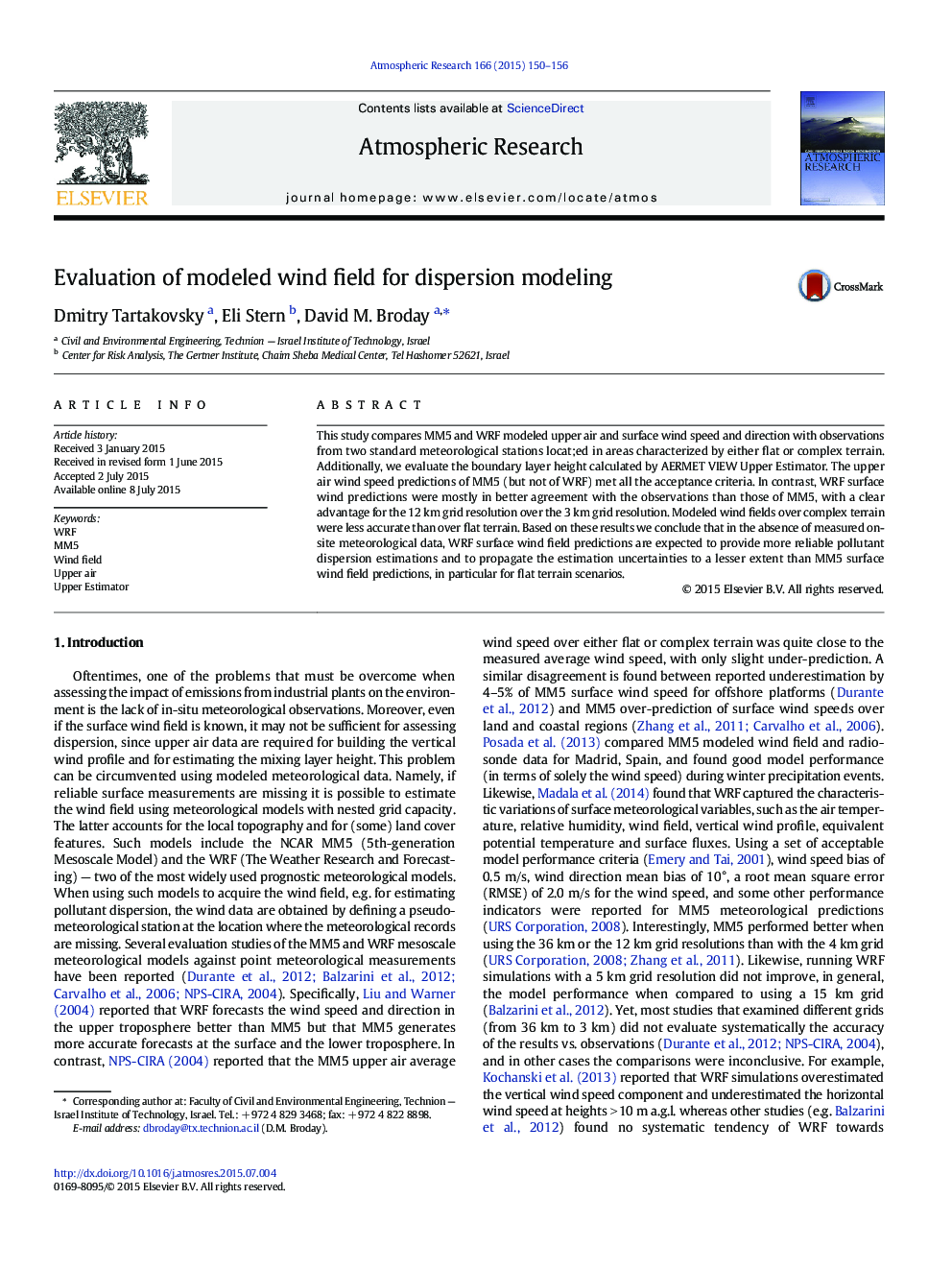| Article ID | Journal | Published Year | Pages | File Type |
|---|---|---|---|---|
| 4449736 | Atmospheric Research | 2015 | 7 Pages |
•AERMET Upper Estimator, MM5 and WRF wind filed predictions are evaluated against observations.•Evaluation is done for both flat and complex terrain conditions.•Upper air predictions of MM5 were found to outperform those of the WRF.•Surface wind field predictions of WRF outperformed those of MM5.•Modeled wind fields over complex terrain were less accurate than over flat terrain.
This study compares MM5 and WRF modeled upper air and surface wind speed and direction with observations from two standard meteorological stations locat;ed in areas characterized by either flat or complex terrain. Additionally, we evaluate the boundary layer height calculated by AERMET VIEW Upper Estimator. The upper air wind speed predictions of MM5 (but not of WRF) met all the acceptance criteria. In contrast, WRF surface wind predictions were mostly in better agreement with the observations than those of MM5, with a clear advantage for the 12 km grid resolution over the 3 km grid resolution. Modeled wind fields over complex terrain were less accurate than over flat terrain. Based on these results we conclude that in the absence of measured on-site meteorological data, WRF surface wind field predictions are expected to provide more reliable pollutant dispersion estimations and to propagate the estimation uncertainties to a lesser extent than MM5 surface wind field predictions, in particular for flat terrain scenarios.
